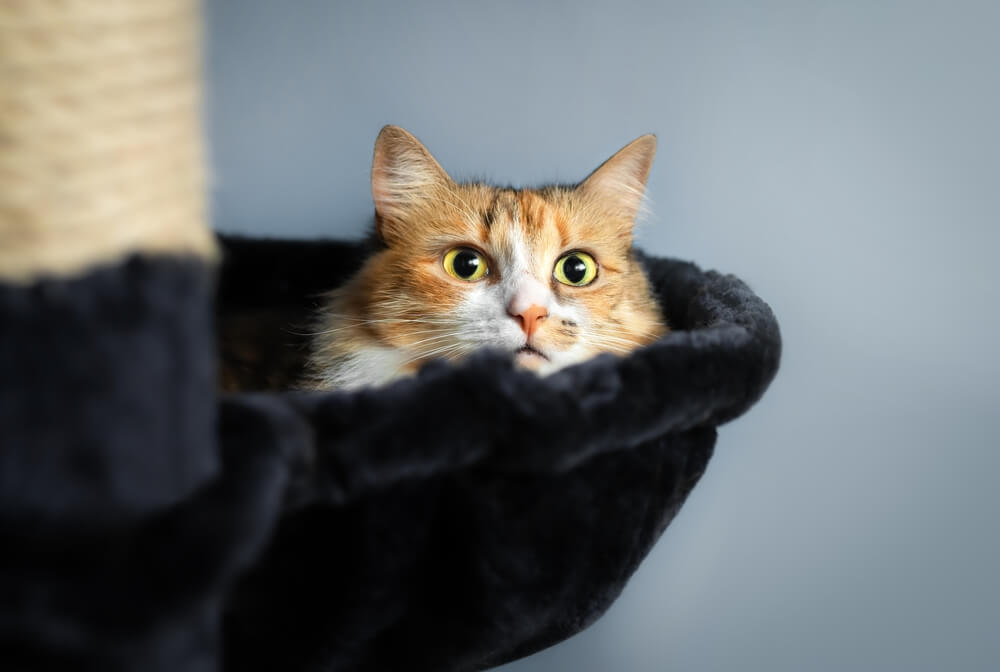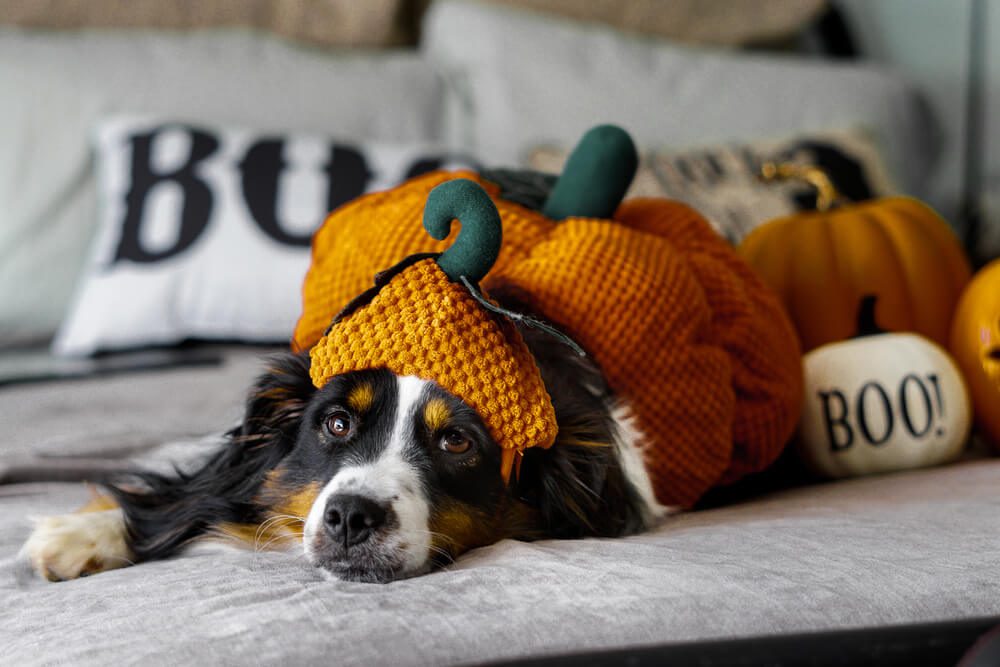Halloween Pet Safety Tips: 5 Ways to Keep Your Pets Safe This Halloween
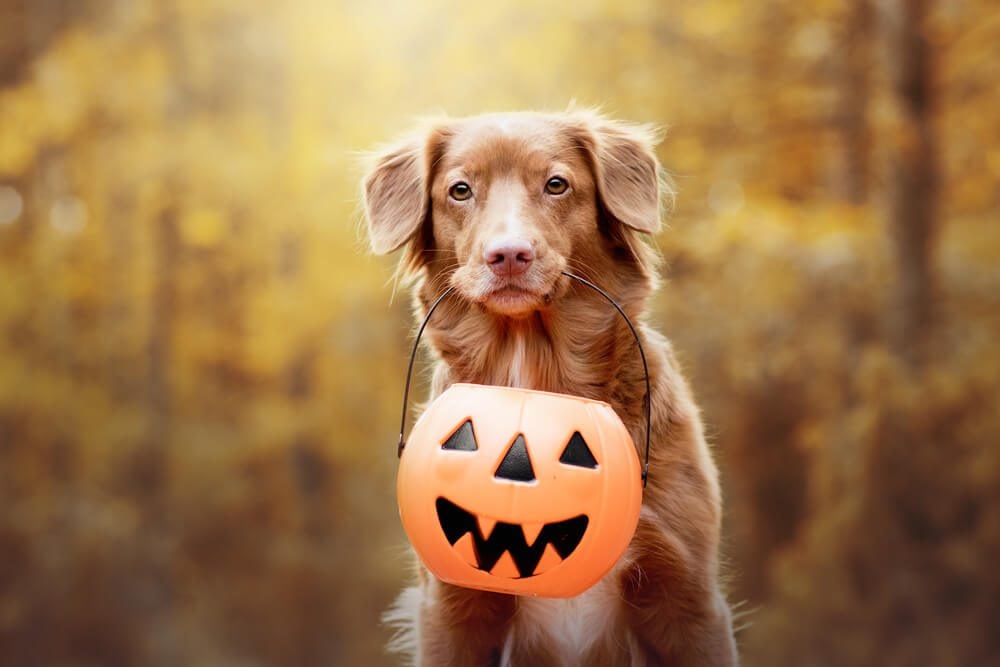
Table of Contents

Halloween Pet Safety Tips: 5 Ways to Keep Your Pets Safe This Halloween
As Halloween approaches, it’s easy to get caught up in the decorations, the costumes, and the stocking up of candy. But let’s not forget our furry friends as they scamper at our feet while we’re carving pumpkins and hanging skeletons from the staircase.
We’ve got some safety guidelines below to ensure that your scary night is fun and festive rather than terrifying for your pet. While you organize party snacks, crowds, decorations, and costumes, keeping your pet safe should remain one of your top priorities.
1. Keep Halloween Candy Out of Reach
Even dogs with the most robust digestive system should avoid Halloween candy. The bowls for trick-or-treaters are everywhere, so you must remain alert and watch that your pet doesn’t sneak off with some candy in their jaws. This may be easy to control in your home, but it’s a tip to keep in mind if your pet goes trick-or-treating with you and the kids.
Placing Halloween treats in a closed jar may be the safest way to keep them away from your pet. Encourage children to throw wrappers away and tell them how to keep their furry friends safe. Small trick-or-treat containers for children will also ensure hungry pets head to their food bowls when they need a snack.
Consider making pumpkin or peanut butter treats if you want your pet to enjoy a Halloween treat. However, check all labels to ensure the peanut butter is xylitol-free.
Below are some of the leading candy threats that can cause digestive issues or even toxicity in your pet.
Raisins
Raisins, grapes, sultanas, and currants are all toxic for dogs and cats and should be avoided. Call your veterinarian immediately if your pet ingests any of these items, as these fruits can lead to severe or acute kidney failure.
Chocolate
Chocolate is very dangerous for pets and can cause cardiovascular, neurological, and gastrointestinal issues. The type of chocolate and the amount ingested in relation to your pet’s size will determine the side effects on your pet. Dark chocolate, baking chocolate, and dry cocoa powder are more harmful than white or milk chocolate.
In one study where 156 dogs were observed, less than 3% of the canines had a fatal reaction to the chocolate. Timeous decontamination and symptomatic therapy are vital to protect and save your pet.
Candy Corn
Certain carbohydrate sugars are beneficial to our diets. But just as too much glucose and sucrose can be detrimental to our health, so are they harmful to our pets.
If your dog consumes holiday candy or candy corn, the sugar can spike their glucose levels, causing gastointestinal upset, and health issues.
Excessive exposure to sugar can accelerate cavity formation and obesity in pets. It can also lead to increased insulin secretion, negatively influencing the wellness of your pet’s muscle tone, fat storage, immune system, and energy levels.
Xylitol
Xylitol is highly toxic for pets and causes hypoglycemia in dogs. Hypoglycemia is when blood sugar levels rapidly drop, which can happen within ten to sixty minutes of your pet’s xylitol exposure. Xylitol toxicity can also trigger liver failure in canines.
Many treats, sweets and gums labeled as “sugar-free or sugarless,” are often sweetened with xylitol and would be toxic if your pet ate it.
Your cat may be less likely to indulge in Halloween treat, but they can still be affected by all the ingredients mentioned above.
Symptoms of Toxicity
Side effects of toxicity do not always show up immediately. To guarantee a quick response, contact your emergency vet center as soon as you’ve noticed that your pet has eaten anything toxic. Immediate treatment will slow the toxicity exposure in your pet’s body.
However, if your pet was munching away without your knowledge, these are symptoms to look out for.
- Vomiting
- Diarrhea
- Abdominal pain
- Seizures
- Shaking
- Hyperactivity
- Extreme thirst
- Panting
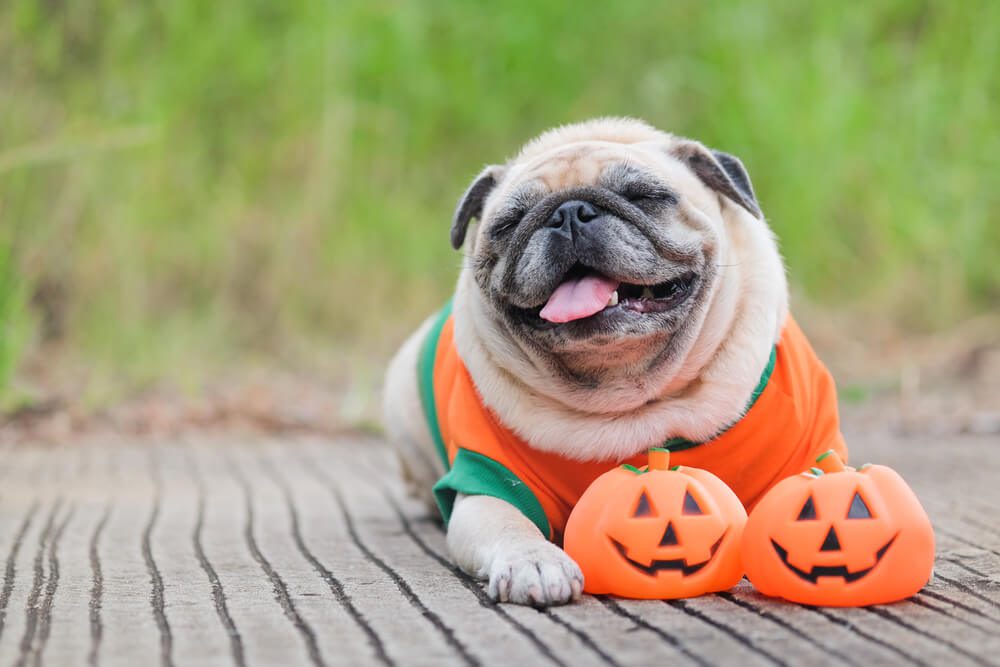
2. Ensure Costumes are Comfortable
Halloween costumes for pets are so adorable! Seeing your little furball dressed for a spooky party can be an exciting highlight with hours of planning or online shopping.
Here are a few things to consider when planning a costume for your dog or cat.
- Make sure the costume fits comfortably and is not restricting your pet’s ability to move, see, smell, breathe or make vocal sounds. They should still be able to jump as usual.
- Select a simple costume, avoiding anything that has straps or small accessories that can pose choking hazards or could get them trapped in usual areas. Does your pet go outdoors through a flap, and can they still do so with their costume?
- Is your pet happy in its costume? Practice wearing it a few times at home before Halloween to get your pet used to the headpiece or body suit. If the outfit causes undue stress, opt for something simpler, like a themed jacket similar to their regular one.
- Get your pet kitted up in their Halloween suit for a short period when you’re ready for photos or to show them off to your guests. Please pay attention to your pet and relief them of their outfit as soon as they seem uncomfortable or restless.
- Stay clear of pet costumes or headpieces that contain glowing liquid. If your pet chews its glow-in-the-dark headpiece, the bright fluid can leak, leading to mouth irritation, vomiting, and salivation.
3. Protect Pets From Halloween Decorations
Pets who are anxious or curious are likely to explore new and exciting Halloween decorations around your home. While we don’t want to limit your creepy and macabre decorations, keep these precautions in mind:
- Candles and Jack-O-Lanterns can pose a hazard for furbabies but also for small children. Faux candles are a better alternative as they cannot be knocked over to start a fire.
- Electrical cords should be hidden behind PVC runners so that gnawing pets avoid the temptation to chew. Alternatively, secured battery holders can be safer for your pet and electricity bill.
- Fog machines should be used with caution and plenty of circulation. Select a device that operates with dry ice, water, or liquid nitrogen. Move your pet if they settle close to the machine.
- Glow sticks or jewelry fall to the floor during party festivities. Place these items out of your pet’s reach. As we mentioned with the costumes, glow-in-the-dark liquid can irritate your pet’s mouth and lead to vomiting or excessive salivation.
- Small decorative items your pet steals and wonders off to chew can pose a choking risk. Skip these decorations if your pet is prone to gnawing on unusual items in the home.
- Rotting pumpkin can upset your dog’s stomach. While fresh or cooked pumpkins are good aids for healthy digestion in pets, a rotten pumpkin could irritate their digestive tract. Make sure to remove rotting pumpkins from your home. Pumpkin rind can obstruct your pet’s intestinal tract, so if your pet seems to gravitate towards your pumpkin decorations, opt for a shelf rather than the floor.
4. Keep Anxious Pets Calm
During the holiday season, it’s important to remain mindful of your pet’s stress levels. Crowds of people in your home, excessive noise, unusual costumes, fireworks, flashing decorations, and congested spaces can cause pets anxiety.
Signs of Anxiety in Pets
Pacing and shaking
A shivering dog exhibiting any extreme behavior is a sign of anxiety. Read your pet’s cues and body language to understand their reaction to situations. As you get to know your pet, you’ll know their telltale signs of stress.
Hiding
If your pet hides under the bed or elsewhere, they’re most likely scared.
Running away
Some dogs flee when they’re fearful. Ensure your pet is secured indoors during Halloween festivities so that you don’t spend the rest of your night worrying and searching for your lost pet.
Panting and elevated heart rate
This is an automatic response to stress due to the release of adrenaline. Your dog will pant more when its heart rate has increased. This can also lead to drooling or lip-smacking.
Gastrointestinal Issues
Anxiety and nervousness can upset the digestive system, causing your pet to have loose stools or bathroom accidents. Rather than reprimand your pet for accidental urination or soiling of your Halloween-themed rug, take them to a safe space and comfort them.
Unusual Behaviors
Pets can show strange compulsive behaviors when they’re stressed; here are some examples:
- Licking themselves or items continuously
- Destructive behavior
- Chewing items
- Repetitive vocalization (barking or meowing)
- Overgrooming
- Sucking (common in cats)
Sudden Shedding
Many pets will shed more than usual during stressful events or situations.
Hypervigilance
Dilated pupils, upright or side-directed ears, or stiff and alert postures will signal that your pet is not calm.
Calming Tools for Pets
Calming tools can be helpful in many situations, from vet visits to holiday seasons. During Halloween, consider the following calming aids that can ease your pet’s stress.
A Calming Vest from Honest Paws can create a pressure that is calming to pets. During one study, anxiety vests decreased the escalated heart rate in canine subjects by 8%, and the overall anxiety score was lower by 34% compared to dogs without anxiety vests.
Honest Paws Calming CBD chews, or oil contains Cannabidiol oil (CBD) that is shown to have therapeutic and anxiety-easing effects on pets and humans. CBD is safe for pets and Honest Paws using full spectrum hemp oil that is lab tested. Your pet cannot overdose on CBD oil. CBD tincture can also help with discomfort, mobility, general wellness, immunity, and improved skin and coat health.
Anxiety medication may be necessary if your pet has extreme anxiety and nothing else seems to be doing the trick. Speak to your veterinarian about various options, but remember to ask about the side effects of over-the-counter or prescription anxiety medication.
Pheromone sprays or collars can also have a positive effect on pets. These pet calming tools contain pheromones that appease pets’ moods with a comforting scent.
Calm Your Cat or Dog. Here’s How:
- Create a safe space that’s dedicated to your pet so that they can retreat when they’re feeling overwhelmed. Provide an elevated and vertical space for your cat, who may prefer to relax in a cat tree. You may also opt for a crate or a corner in a quiet room that can keep them safe from running out during trick-or-treating.
- Make sure your secured pet has access to food, water, and their litter box.
- Play with your pet and take a moment to engage with them. This connection can ease their nerves.
- Press play on white noise or gentle tunes that can calm your pet and drown out any party racket.
- Praise your pet when they’re calm and offer them some CBD calm treats for their easy behavior.
Having a safe and happy pet is more important than dragging them along to show them off in their cute vampire suit.
5. Keep Pets Identifiable
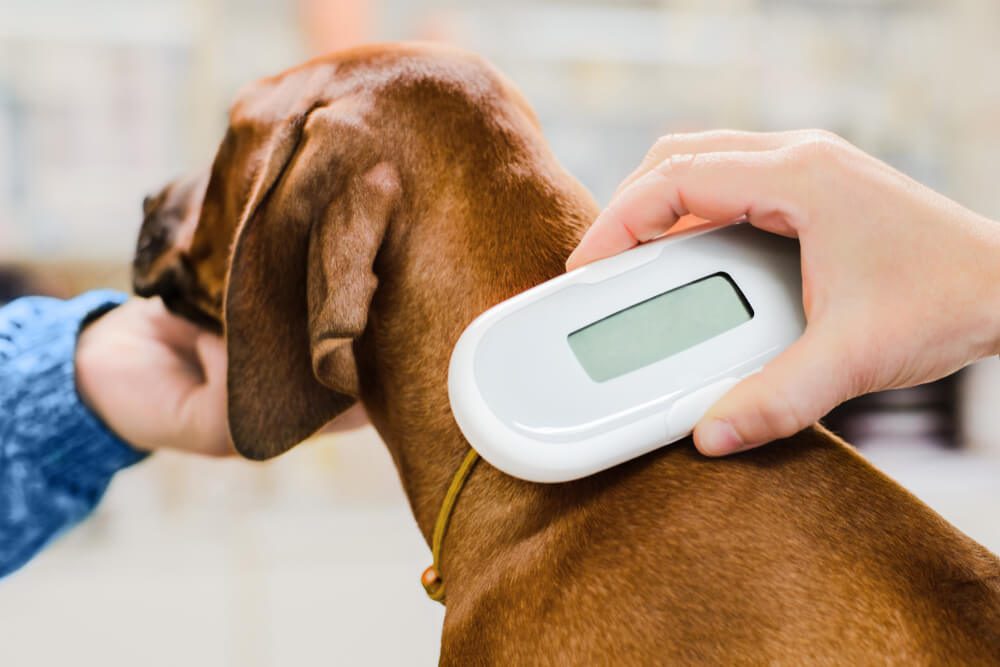
Losing your pet on such a busy night of the year can be scary. Take all necessary measures to ensure your pet will easily be found if they escape. Proper identification, microchipping, and GPS dog collars all provide steps to help you bring your pet home safely. Ensure that your ID tag details are up to date so that your pet can return home safely if they do end up losing their way home.
Securing all escape routes and helping your pet to settle indoors can also deter your pet’s desire to escape and hide because of anxiety.
As exciting as this spooky holiday is, protecting your pet is worth the effort. Your pet may happily partake in festivities if they’ve been properly socialized from a young age, but older or more anxious pets need our protection.















